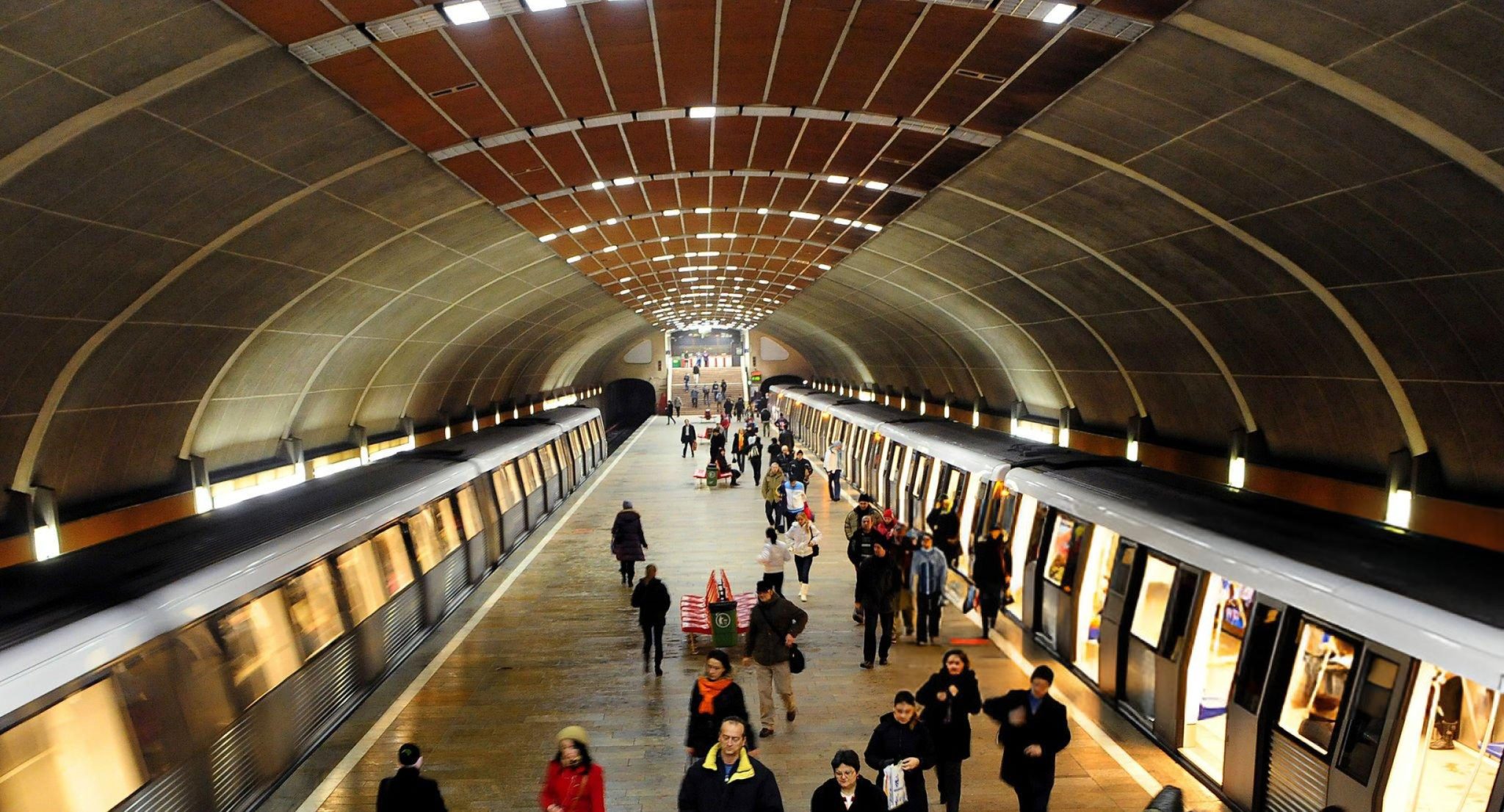A pair of enormous turquoise domes rises on the skyline of Tashkent, the capital of Uzbekistan, sitting proudly against the city’s eclectic horizon like two upturned bowls. One shimmers with traditional Uzbek ceramic tiles, while the other glistens with pleated metal ribs of vivid azure. Echoing the grandeur of mosques in historic Silk Road cities such as Samarkand, Khiva and Bukhara, these domes shelter rather different structures: a bustling bazaar and a UFO-like circus.
The ribbed metal dome crowns the Tashkent State Circus, a striking big top capable of hosting 3,000 spectators. Built in 1976, its space-age aesthetic mixes futuristic flair with Central Asian tradition. The ceramic-tiled dome, meanwhile, shelters Chorsu Bazaar, constructed in 1980, a lively marketplace sprawling across the area of two football pitches. Both are brilliant examples of Soviet modernism, recently proposed for UNESCO World Heritage status.
“People tend to associate Uzbek heritage only with ancient Islamic monuments,” explains Gayane Umerova, chair of Uzbekistan’s Art and Culture Development Foundation (ACDF). “But our modern history is equally at risk, especially with rapid urban development. We must act now.”
Following the controversial demolition of the beloved House of Cinema in 2018 – a cylindrical concrete landmark from 1982 – the ACDF has campaigned to save Tashkent’s unique postwar architectural heritage. The cinema’s loss to make way for the sprawling, glassy Tashkent City development sparked widespread public anger and prompted a national re-evaluation of late Soviet architecture.
Tashkent occupies a singular place in Soviet history as a “beacon of socialism in the East,” an idealised model of prosperity and modernity adapted for non-Russian populations. After a devastating earthquake in 1966, the city was rebuilt under a sweeping masterplan of grand avenues, futuristic structures, and orientalist flourishes that blended modern engineering with references to the Timurid dynasty’s 15th-century architecture.
“Curiously, the designs sent from Moscow were often more decorative than those produced locally,” notes Ekaterina Golovatyuk of Milan-based architecture practice Grace, leading efforts to protect these buildings. “They offered locals a kind of exoticised vision of themselves.”
One standout is the former Lenin Museum, now the State History Museum, a gleaming white cube wrapped in monumental latticework inspired by traditional Uzbek panjara screens. Created in 1970 by Moscow’s elite Central Scientific Research and Experimental Project Institute, its hidden steel structure allowed for a bold floating effect, blending modernism with traditional motifs – though locals once criticised it as superficial.
The circus dome is another fascinating case. Originally envisioned in the early 1960s as a brutalist “flying saucer” by architects Genrikh Aleksandrovich and Gennady Masyagin, construction was delayed by the earthquake. Over time, the design evolved to resemble an Uzbek piala teacup, adorned with decorative sunshades echoing ancient Kufic script. Inside, cosmic rays beam from the entrances, merging Soviet futurism with ornate Islamic patterns.
Not all experiments focused on decoration. The radical Zhemchug (Pearl) housing project, built in 1985, offered a vertical reinvention of traditional mahalla courtyard life. Designed by Ophelia Aydinova, the 16-storey tower features communal courtyards every three floors, where residents gather for weddings, games, and evening teas. Though pioneering in its construction methods, the project proved expensive and slow, yet its close-knit community endures.
Symbols of national pride grew ever grander as the Soviet system faltered in the 1980s. The colossal Palace of People’s Friendship, opened in 1981, seats over 4,000 in a hall lavishly adorned with gilded ceramics, crystal chandeliers, and intricate tilework. Designed by Yevgeny Rozanov and Elena Sukhanova, it boasts facades of giant grillework and vast friezes inspired by Islamic muqarnas, resembling a monumental Transformer poised for action.
Further wonders await in Tashkent’s opulent metro system. Kosmonavtlar (Cosmonauts) station, opened in 1984, immerses travellers in a cosmic dream of blue-tiled walls, green glass columns, and celestial lighting.
Perhaps the most spectacular site of all is found an hour outside the city: the Sun Heliocomplex in Parkent. Built in 1987, this towering array of mirrors can concentrate sunlight to temperatures of 3,000°C. Originally designed to develop heat-resistant materials for nuclear technology, it now serves industry and tourism alike. Sculptural ceramic screens and dazzling chandeliers designed by artist Irena Lipene transform the scientific behemoth into a surreal monument of the nuclear age.
Leading Uzbek architect Sergo Sutyagin once hailed this “cosmic architecture” for its ability to “poetically and fantastically emerge” from the hillside, inspiring “philosophical reflections on the reality of the unreal.”
Today, visitors to the Sun Heliocomplex can witness the immense power of the sun — perhaps even to fry an egg — amidst the glimmering echoes of Soviet ambition.






